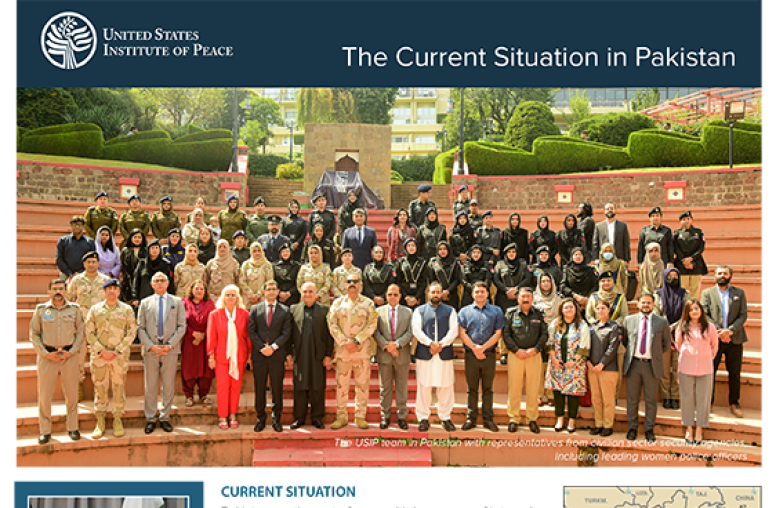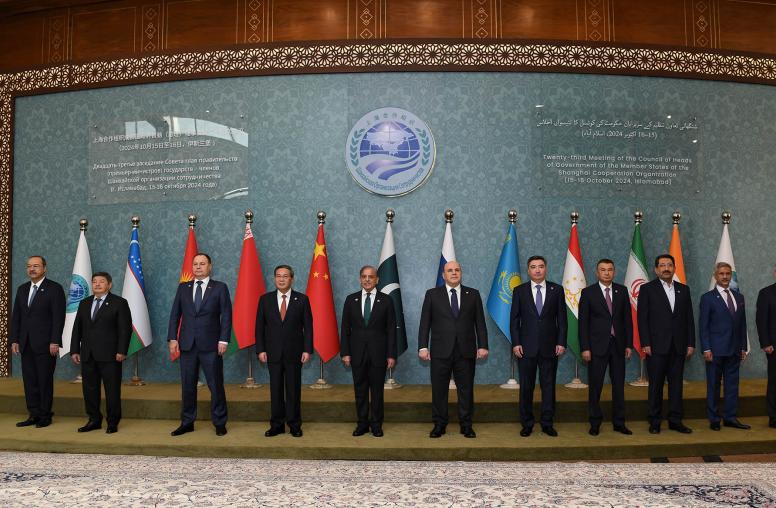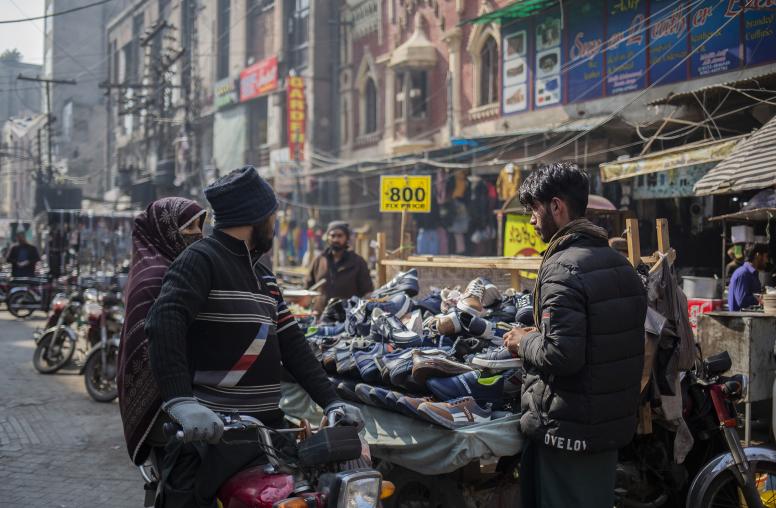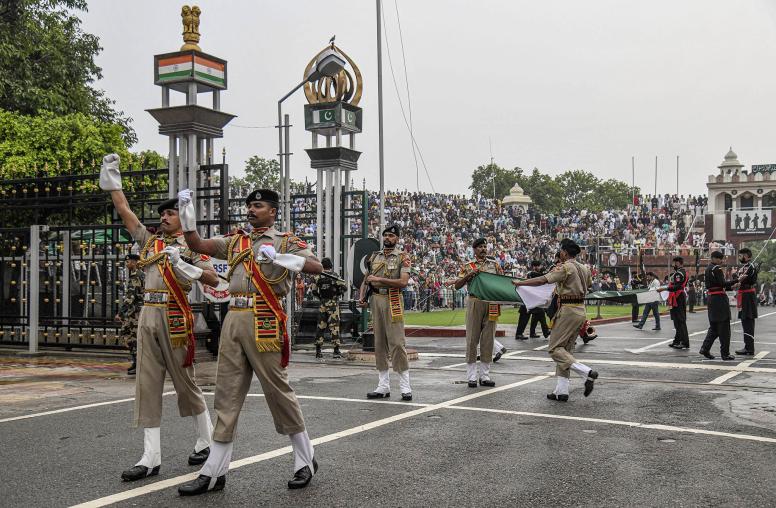Pakistan’s New Government Seeks Exit from Economic Malaise
Pakistan Finance Minister Mohammad Ishaq Dar wrapped up a round of road shows for international investors recently as the country returns to the bond markets after a multi-year hiatus. During an appearance at the U.S. Institute of Peace (USIP) last week, he joked that he was still in sales mode as he gave an upbeat assessment of the government’s drive to strengthen the economy.

Exports are rising, annual economic growth is up, the budget deficit has dropped and leaders are focused on increasing investment and trade rather than depending on foreign aid, Dar told the audience at USIP on April 8. International bond markets have welcomed the country’s issue of $2 billion of notes, as it continues reforms under loans with the International Monetary Fund and wins World Bank support for a five-year, $10.2 billion plan starting in 2015.
The response of international investors has been “amazing,” Dar said. “That shows that the confidence of the financial markets also, like the multilateral donors, has come back.”
Pakistan’s economic malaise is weighed down in part by energy demands that far outstrip the ability of the country’s outdated infrastructure and rigid bureaucracy to deliver. The pressure is intensified by the urgency of finding employment for a society in which 38 percent of the population is between 15 and 35 years old, and by the dire health condition of citizens that was outlined at a previous USIP event with the U.S. Agency for International Development’s (USAID’s) chief of mission in Islamabad.
Dar was appointed last year by Prime Minister Nawaz Sharif, who took office with the decisive victory of his center-right Pakistan Muslim League (PML-N) party in May parliamentary elections. It was a return for Sharif, after having previously been ousted in a 1999 military coup led by then-Chief of Army Staff General Pervez Musharraf. Last year’s election, which generated the biggest voter turnout since the 1970s, resulted in a “new and confident Pakistan,” Sharif told an audience at USIP in October.
Dar has a background in the private sector, including in the U.K., as well as government executive and legislative experience in Pakistan, USIP Board Vice Chairman George Moose said in introducing Dar at this week’s event.
“The challenges were huge” when the new government took office last year, Dar said. “Even at the cost of a little unpopularity in terms of political ground, we introduced – in accordance with our own manifesto -- very painful reforms in the first few months.”
The Asian Development Bank is assisting Pakistan with highway and power distribution infrastructure projects as well as in expanding the social safety net to ease the impact on the poorest citizen as the country implements reforms such as increasing energy costs to market levels, partially or fully privatizing at least 31 government-controlled enterprises and stepping up tax collection. United Nations figures show 21 percent of the country’s 184.35 million people live below the poverty line.
USAID's Pakistan mission chief, Gregory Gottlieb, expressed concern at a March 25 event at USIP that conditions set by the IMF on a $6.6 billion loan from the fund have prompted Pakistan’s government to reduce development spending “drastically” in the social sector in order to cut the budget deficit..
“Because of this reduced spending, our social sector program is gaining even greater importance, and we recognized this with the launch of a new follow-on $387 million maternal and child health program,” Gottlieb said. That will “alleviate some of the financial pressure on Pakistan as it undertakes the IMF-mandated reforms that will allow its economy to regain a sustainable upwards trajectory.”
Statistics show that high rates of malnutrition in Pakistan deliver about the same hit to the country’s economy as energy shortages, Gottlieb said. About 44 percent of children younger than 5 are stunted because of chronic malnutrition, affecting their long-term educational and societal prospects, he said.
“The foundation of physical security has roots in citizens’ economic security,” Gottlieb said. “Economic security is founded on the ability of the population to actually participate productively in the public sphere.”
The Pakistani government’s aims include doubling economic growth to 6 percent within three years and reducing the budget deficit from 8.8 percent when the new government took over to “a very acceptable” 4 percent by 2016. The administration also plans to focus on exploiting the country’s reserves of hydrocarbons, ore and other minerals. Supporting a foreign investor’s exploration is significantly cheaper than importing the energy Pakistan needs, Dar said.
“I believe the future lies in the exploration and production of the natural resources Pakistan is blessed with,” he said. “That area has been totally ignored in the last two decades.”
A “very detailed plan” to increase energy generation includes $30 billion of infrastructure projects that also will create jobs and contribute to economic growth, Dar said.
The government also plans to double spending on education as a share of the national budget to 4 percent from 2 percent, and has already increased funding of the “social safety net” by 87.5 percent, he said. The latter will add 1 million families to the rolls receiving cash income support. Microfinance and skills training for youth also is getting a boost, Dar said.
Sharif’s administration will find a far less polarized voter base and more empowered citizenry to work with than he had during his previous time in office, according to polling conducted by over the decades by the Pakistan Institute of Public Opinion, also known as Gallup Pakistan for its affiliation with the international research group.
Ijaz Shafi Gilani, chairman of the Pakistan Institute, said voters have shifted markedly over the years to naming the country’s top two political parties among their first and second choices, rather than endorsing one and entirely rejecting the other. In a roundtable discussion at USIP last month, Gilani said the 2013 election also produced a diverse base of political leadership.
“Polarization has declined very dramatically,” Gilani said.
And despite the lags in education for some Pakistanis, educational levels have risen dramatically in the past 30 years. In 1981, only about 26 percent of school-age children were enrolled in modern education. By last year, it was almost universal, and 64 percent remain in school until age 15, he said. More and more Pakistanis also have a shot at higher education.
Ironically, it’s such improvements that often contribute to unrest because of limited opportunities for a more educated and privileged middle and upper class to participate in or influence political life, Gilani said. Considering the needs of Pakistan’s rapidly growing cities for effective administration, the government should consider distributing authority further, from the provinces to more local levels, he said.
Control of Pakistan by civilian rather than military rule “hinges on the decision of the present civilian leadership to devolve power to a level where they create the political and administrative structures to match this effervescent society,” Gilani said. “If it doesn’t, I don’t think this civilian supremacy will continue.”



